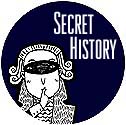 |  |

Gay Street, with strings and frets
by Jack Neely
A man now in his 70s recalls growing up in tiny Luttrell, Tennessee, "listening to the clackety-clackety sound of the cars as they sped past heading for Knoxville, which was 20 miles to the south, and a place I had never been. Many nights my heart jumped aboard that speeding train and rode right into those bright lights and busy streets that I had heard so much about..." The prospect of riding that train all the way to Knoxville, he recalls, was "just too much for my young mind to handle."
Later, on what he recalls as "the biggest day in my early life," he got to visit Knoxville. "There I saw a blind man playing a guitar on the street. I can still see him, with that old, beat-up guitar and a tin cup tied close to the pegs. I can even hear the coins drop into the cup. When we got home, I told Mother, 'I wish I was blind and had a guitar...'"
Knoxville circa 1930 was a mecca for kids interested in the people's music, whatever you want to call it: country, folk, blues, those labels just weren't sticking very well in those days. (Ask someone to play you some "country music" in 1930, and they'd likely dig out some old sacred-harp hymns.)
Back in the early '20s, a correspondent for the New York Times had commented on the liveliness of the blind street musicians of our Market Square. The reporter didn't mention what songs they were playing; but that they were all blind isn't surprising. Music didn't pay, unless you count buffalo nickels in a tin cup as a salary. It was mostly the blind, unemployable elsewhere, who were desperate enough to seek a living as guitarists.
Hardly anyone paid a concert admission to see country music on a stage, and there were few records to be had. Go to a place that sold 78s for a Victrola in the early '20s and you'd find mainly marching-band music, tenor arias, sentimental ballads.
That all began to change in the '20s; Sterchi Brothers Furniture, headquartered on Gay Street, had a lot to do with it. In those days, record-players were furniture, and 78 rpm records were furniture accessories. Sterchi's sold them all and produced a good deal, too. Anxious to expand the market for Victrolas beyond the traditional upper-crust market, Sterchi's began sending musicians from these medicine shows and city sidewalks up to New York to make recordings—to sell to working-class people in the South.
Simultaneously, radio—WNOX and WROL were both on the air, broadcasting live music by 1925—popularized folk music, not yet called country. By 1930, a folk musician was something to be.
Brownie and Stick McGhee were in and out of town in those days, playing guitar on the streets. Martin, Bogan, and Armstrong, another black string combo were then making their own kind of music on WROL. (Whether you call them jazz, the forerunners of Reinhardt and Grappelli, or bluegrass, the forerunners of Flatt and Scruggs, is your call, and I won't argue.)
For all we know, the man who impressed that boy from Luttrell may have been Charlie Oaks himself. The blind white guitarist historians recall as the first known professional country musician, Oaks made some recordings but was still known to play the streets of Knoxville, where he'd been gathering nickels for more than a quarter of a century.
There were many others, of course, most of them with names we'll never know—like the street musicians who played a song called "Great Speckled Bird" that a young guy from Fountain City happened to overhear. Roy Acuff worked up his own version of the song he heard from nameless buskers in downtown Knoxville, and it became one of his biggest hits.
We don't know which blind musician that boy from Luttrell happened to hear. Fortunately, he didn't have to go blind to learn the guitar. He learned fiddle, too, and by 1935, he was back in town, an 11-year-old in a trio that included his brother and stepfather, vying for a WNOX talent show held between movies at the old Strand Theater on Gay Street near Wall, playing old-time songs like "Foggy Mountain Top" and "Cackling Hen." They got third prize; a kid singing "Won't You Come Home, Bill Bailey" took the blue ribbon.
Over the next few years, the kid tuned in "Mid-Day Merry-Go-Round" on his crystal radio set. Everyone knew the show, broadcast daily from WNOX's Gay Street studios, was once Roy Acuff's bandstand. "I listened every day...and I wanted to be on that show so bad I could taste it."
WNOX honchos Lowell Blanchard and Archie Campbell hardly heard this teenage kid named Chester Atkins before they hired him.
These memories, by the way, are courtesy of Chet Atkins' 1974 autobiography, Country Gentleman, a book that's more readable, more coherent—and humbler—than most country-music autobiographies. Atkins' career transcends country; even in Knoxville in the '40s, some were calling his groundbreaking work jazz. He's had the most remarkable career in American guitar history; he's played with Hank Williams, Elvis Presley, and the Everly Brothers on some of their best-known recordings; he influenced the Beatles and many other rock 'n' roll and country bands; over the last decade or so, he's been well known for his extensive recordings with guitarist Mark Knopfler of Dire Straits.
Atkins turns 74 this month. If you haven't heard, he's playing here this Friday, in a tribute to Knoxville's dynamic country-music heritage. The show will be at the Tennessee Theater—which happens to be about a block down the street from where he placed third in a talent show, over 60 years ago.
For a century, country music has been playing Gay Street like an unpredictable hand on the frets of a guitar, sounding a little different with every stroke. Chet Atkins knows better than anybody what it can do.

|